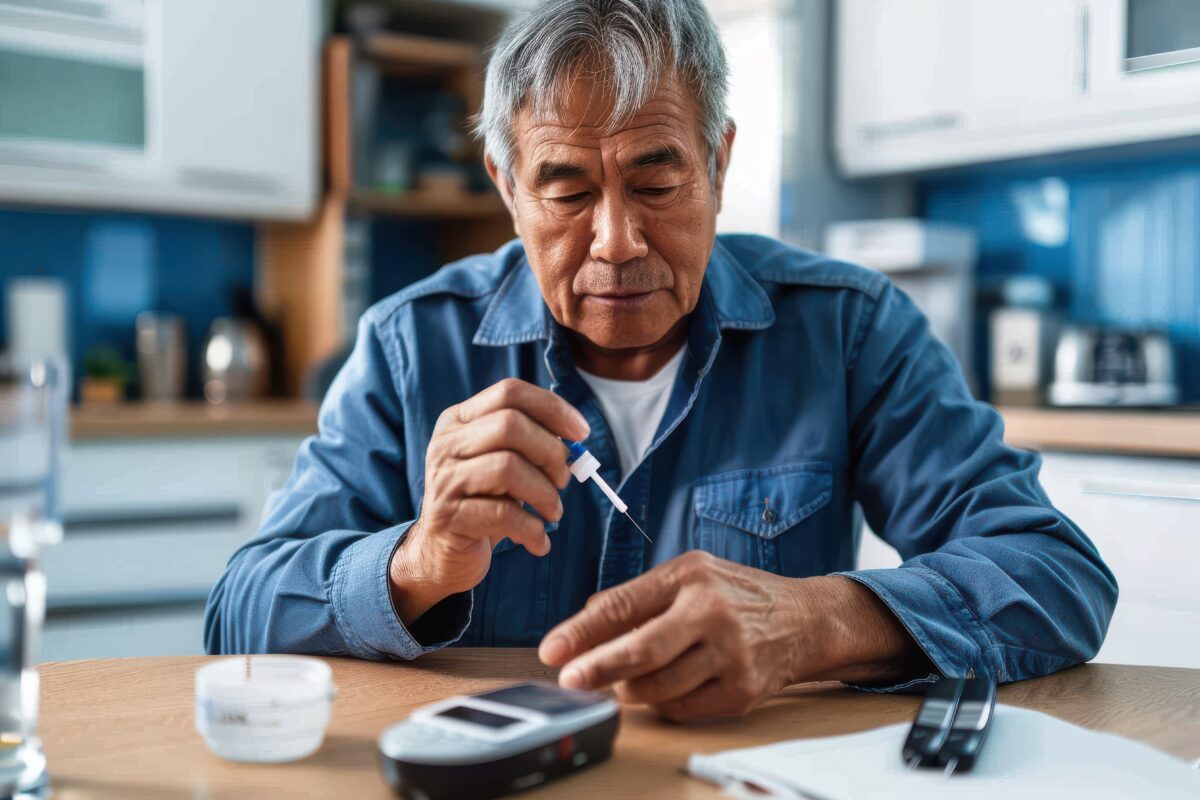
Mindfulness is a form of meditation where you focus on being fully present in the moment, noticing your surroundings, thoughts, and sensations without judgment. This practice encourages acceptance, allowing you to observe what you’re feeling or thinking without trying to change or interpret it. Mindfulness techniques often include deep breathing, guided imagery, or specific body relaxation methods that help ease tension and lower stress (Mayo Clinic, 2023).
In our fast-paced lives, we often get caught up in overthinking, excessive planning, daydreaming, or focusing on negative thoughts. This mental activity can be mentally exhausting and increase your vulnerability to stress, anxiety, and depression. Mindfulness exercises redirect attention away from this cycle, helping you ground yourself in the present and engage more meaningfully with the world around you (American Psychological Association, 2021).
Benefits of Meditation
Meditation has been the focus of many scientific studies, and the results consistently show that it has numerous mental and physical health benefits. Some of the key areas where meditation has been proven effective include:
- Stress reduction: Meditation helps calm the mind and body, reducing cortisol levels (the stress hormone), leading to an overall sense of peace and relaxation.
- Anxiety: Regular meditation practice has been shown to decrease anxiety symptoms by helping individuals become more aware of their anxious thoughts and feelings without reacting to them.
- Pain management: Mindfulness meditation can help people manage chronic pain by altering the way the brain processes pain signals.
- Depression: Meditation promotes a balanced perspective on emotions, helping to alleviate symptoms of depression over time.
- Insomnia: Practicing meditation helps in calming the mind, allowing for improved sleep quality and duration.
- High blood pressure (hypertension): Meditation has been shown to help lower blood pressure by inducing relaxation and reducing stress levels (National Institutes of Health, 2022).
Early research also shows that meditation may be helpful in managing conditions like asthma and fibromyalgia, though more studies are needed. Overall, the practice of meditation encourages mental clarity, emotional stability, and physical health, all of which contribute to a higher quality of life (National Institutes of Health, 2022).
In addition to managing specific conditions, meditation is associated with the following benefits:
- Improved focus and attention: Meditation trains the brain to concentrate better and avoid distractions.
- Reduced job burnout: Regular mindfulness practice helps individuals manage work-related stress and prevents emotional exhaustion.
- Better sleep quality: Meditation can help create a calm mental state conducive to falling asleep faster and staying asleep longer.
- Improved diabetes management: Meditation can aid in regulating blood sugar levels, especially in individuals with type 2 diabetes, by reducing stress, which can negatively impact glucose levels (Mayo Clinic, 2023).
Examples of Mindfulness Exercises
There are many ways to integrate mindfulness into your daily routine, even when you’re pressed for time. Some simple exercises include:
- Pay attention: In today’s fast-paced world, it can be difficult to slow down and notice the small things. Practicing mindfulness begins by using all your senses—touch, sound, sight, smell, and taste. For example, when eating a meal, rather than rushing through it, pause to fully appreciate the flavors, textures, and aromas. This simple act can help you become more present.
- Live in the moment: Intentional awareness of your actions is another important part of mindfulness. It involves paying attention to the present moment and finding joy in the little things. This could be something as simple as enjoying the feel of sunlight on your skin during a walk or savoring the first sip of coffee in the morning.
- Accept yourself: Self-compassion is an essential part of mindfulness. Just as you would treat a close friend with understanding and kindness, practicing mindfulness involves accepting yourself—your strengths, flaws, and emotions—without harsh self-criticism.
- Focus on your breathing: Negative thoughts and stress can sometimes overwhelm you. In moments like this, taking a moment to pause and focus on your breathing can help. Sit down, close your eyes, and take deep breaths, paying attention to the rhythm of your inhale and exhale. Even one minute of focused breathing can shift your mindset (Harvard Health, 2022).
For a more formal approach, consider trying these mindfulness exercises:
- Body scan meditation: Lie flat on your back with your legs extended and arms at your sides. Slowly guide your attention from one part of your body to another, either from head to toe or vice versa. As you focus on each area, take note of any sensations or emotions you might feel, without trying to change them. This practice promotes body awareness and deep relaxation.
- Sitting meditation: Sit in a comfortable position, with your spine straight, feet flat on the ground, and hands resting in your lap. Focus on your breath, noticing how it flows in and out of your body. If distractions—like physical sensations or wandering thoughts—arise, acknowledge them, then gently return your focus to your breath. This practice trains the mind to let go of distractions and stay centered.
- Walking meditation: Find a quiet, peaceful space to walk in a slow, mindful way. As you walk, focus on the act of walking itself – the sensation of your feet on the ground, the balance required to move, and the rhythm of your steps. When you reach the end of your path, turn around and repeat, maintaining your awareness on the physical sensations involved in walking (National Institutes of Health, 2022).
How Often Should You Practice Mindfulness?
Mindfulness exercises can be done anywhere and at any time, especially when you’re engaging in everyday activities. Research shows that connecting with your senses, particularly in outdoor environments, can enhance the benefits of mindfulness (Harvard Health, 2022).
For structured mindfulness exercises like body scan or sitting meditation, it’s important to set aside time in a quiet place without interruptions. Many people find that practicing early in the morning, before the start of their daily routine, helps set a positive tone for the day.
Aim to practice mindfulness every day for about six months. Over time, it will likely become more natural and effortless, serving as a valuable tool to help you reconnect with and nurture yourself regularly (Mayo Clinic, 2023).
Top of Form
Bottom of Form
References:
Mayo Clinic. (2022). Mindfulness exercises. Retrieved from https://www.mayoclinic.org/healthy-lifestyle/consumer-health/in-depth/mindfulness-exercises/art-20046356
American Psychological Association. (2019). Mindfulness meditation: A research-proven way to reduce stress. Retrieved from https://www.apa.org/topics/mindfulness/meditation
Mayo Clinic. (2023). Meditation: A simple, fast way to reduce stress. Retrieved from https://www.mayoclinic.org/tests-procedures/meditation/in-depth/meditation/art-20045858
National Institutes of Health. (2022). Meditation and Mindfulness: Effectiveness and Safety. Retrieved from https://www.nccih.nih.gov/health/meditation-and-mindfulness-effectiveness-and-safety





 In a world where mental health conditions affect millions each year, understanding their impact is more important than ever. These challenges ripple through families, friendships, and workplaces, making mental health awareness crucial in fostering compassion and support. From anxiety and depression to schizophrenia and bipolar disorder, the spectrum of mental illnesses requires a collective effort to dismantle stigma and promote understanding. With the right treatment and support, individuals can lead fulfilling lives, and everyone can play a role in this journey of healing.
In a world where mental health conditions affect millions each year, understanding their impact is more important than ever. These challenges ripple through families, friendships, and workplaces, making mental health awareness crucial in fostering compassion and support. From anxiety and depression to schizophrenia and bipolar disorder, the spectrum of mental illnesses requires a collective effort to dismantle stigma and promote understanding. With the right treatment and support, individuals can lead fulfilling lives, and everyone can play a role in this journey of healing.



 I was lucky enough to grow up in a family that had both a mother and a father (as I grew up, I realized that having a mother and father in the same household wasn’t always the norm). My mother and father raised me as an ‘Army Brat’ with both nurture and nature (mostly nature) and showed me what ‘right’ looks like. So, when I started my professional journey into adulthood (the army and college), they gave me an excellent foundation to filter through people in order to find good mentors.
I was lucky enough to grow up in a family that had both a mother and a father (as I grew up, I realized that having a mother and father in the same household wasn’t always the norm). My mother and father raised me as an ‘Army Brat’ with both nurture and nature (mostly nature) and showed me what ‘right’ looks like. So, when I started my professional journey into adulthood (the army and college), they gave me an excellent foundation to filter through people in order to find good mentors. 
 Glucose, the body’s main energy source, comes primarily from carbohydrates in food and drinks. Your blood carries glucose to all cells for energy, with various processes regulating blood glucose levels. Insulin, a hormone produced by the pancreas, plays a key role in maintaining these levels. High blood glucose (hyperglycemia) often indicates diabetes, a condition where the pancreas produces insufficient insulin, or the body doesn’t respond to it effectively.
Glucose, the body’s main energy source, comes primarily from carbohydrates in food and drinks. Your blood carries glucose to all cells for energy, with various processes regulating blood glucose levels. Insulin, a hormone produced by the pancreas, plays a key role in maintaining these levels. High blood glucose (hyperglycemia) often indicates diabetes, a condition where the pancreas produces insufficient insulin, or the body doesn’t respond to it effectively.
 Quitting smoking is tough and takes time, but it’s one of the best decisions you can make for your health. Despite progress, around 34 million American adults still smoke, making it the leading preventable cause of death and illness worldwide. Each year, smoking is responsible for about 480,000 deaths, or roughly 1 in 5 deaths in the U.S.
Quitting smoking is tough and takes time, but it’s one of the best decisions you can make for your health. Despite progress, around 34 million American adults still smoke, making it the leading preventable cause of death and illness worldwide. Each year, smoking is responsible for about 480,000 deaths, or roughly 1 in 5 deaths in the U.S.
 Nearly 30 million people in the U.S. have some form of diabetes, yet 1 in 4 are unaware they have the disease. Each November, National Diabetes Month serves as a reminder to increase awareness about the risk factors, symptoms, and different types of diabetes.
Nearly 30 million people in the U.S. have some form of diabetes, yet 1 in 4 are unaware they have the disease. Each November, National Diabetes Month serves as a reminder to increase awareness about the risk factors, symptoms, and different types of diabetes.
 Caring for an older adult is a responsibility that often comes with complex challenges. Whether you’re managing multiple medical conditions, coordinating care with healthcare providers, or simply providing daily support, having strong health literacy skills is essential. Understanding how to obtain, comprehend, and apply health information allows caregivers to make informed decisions, advocate effectively, and ensure the best possible outcomes for those in their care.
Caring for an older adult is a responsibility that often comes with complex challenges. Whether you’re managing multiple medical conditions, coordinating care with healthcare providers, or simply providing daily support, having strong health literacy skills is essential. Understanding how to obtain, comprehend, and apply health information allows caregivers to make informed decisions, advocate effectively, and ensure the best possible outcomes for those in their care.
